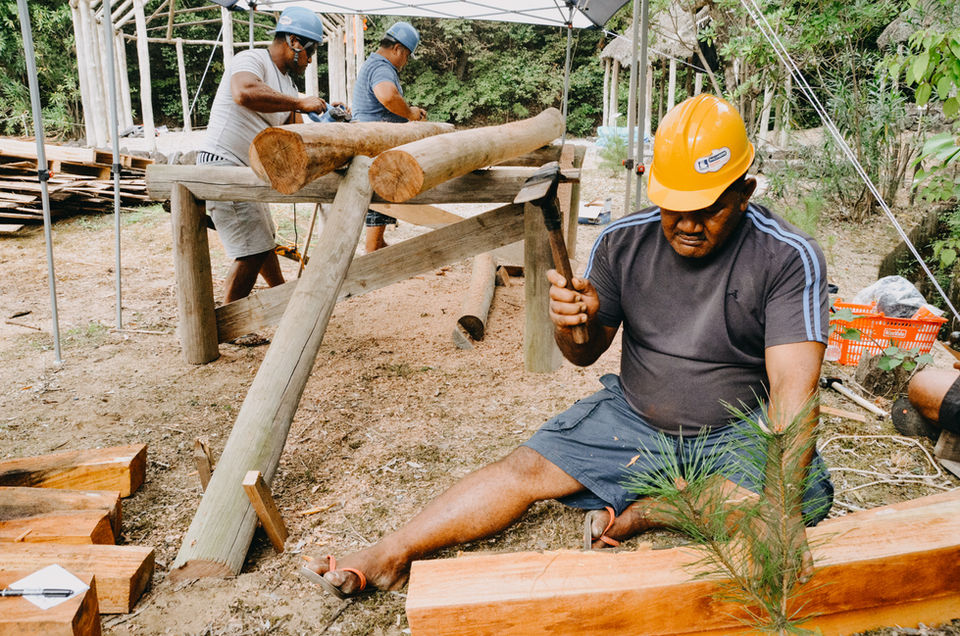JAPANESE FALETELE
Traditional builders from Samoa were in Japan on a very special mission: to build a faletele, a traditional Samoan house that is circular with one or more central posts.
Master Builder Lesā Laufale, who started learning his craft some thirty years ago, leaded the crew. The Little World Museum of Man, where the faletele is built, is near the city of Inuyama in Aichi prefecture southwest of Tokyo. It is an open-air museum celebrating cultures and architecture with 32 traditional houses from 23 countries and regions represented. Founded in 1983, the museum arranged for twelve builders from the village of Sa‘anapu, where the current crew also comes from, to build four Samoan houses over 30 years ago.


THE TEAM
TRADITIONAL TECHNIQUES AND MATERIALS
The faletele was built using traditional techniques and materials. This means using ‘afa, a versatile and strong coconut fibre sennit lashing the structure together. Over 14,000 metres of the handmade cordage is needed, work taking many months to do. The making of sennit during village council meetings is now rarely practiced. Aiming to rekindle interest in the declining craft and with support from the U.S. Government, project manager Galumalemana Steven Percival produced a documentary film and museum exhibit on Samoan sennit in 2013. A stone-floored and sennit-lashed faletele was also built at the Tiapapata Art Centre.
PRESERVING ESOTERIC KNOWLEDGE
House construction is replete with esoteric knowledge but Lesā explains that there are no schools in Samoa where one can learn the required skills. He “studied” under Mulitalo Kirifi, a well-known builder from his village. “I observed Mulitalo working and whenever he asked me to do something and I made a mistake, he would tell me to start over.” The passing down of knowledge from a master builder, matua o faiva, to an apprentice is common across cultures but when particular techniques are no longer used or are modified, aesthetics can be compromised. Not only is the structure less appealing, but the language is also diminished.
DIMINISHING CULTURAL BIODIVERSITY
The natural environment is also affected by the decline. Building materials come from the forest: various palms and trees and a long coconut known as niu‘afa, a species believed to yield the longest coconut in the world. In traditional society, the natural environment was protected by tapu, a set of laws forbidding actions that would adversely impact on the sustainable supply of resources. Ask a sennit maker about the elongated coconut he will tell you about the tapu: one is not allowed to burn leaves or other parts that fall to the ground; these must be buried or thrown in the sea. Ignoring tapu, it is believed, leads to a gradual shortening of the husk. A plant that seems to have disappeared completely from the environment is the wild sugarcane known as tolofualau, named after its broad and supple leaf that was preferred for thatching. Lesā remembers seeing beautiful houses thickly thatched with the leaf. “We now use the courser leaf of the sago palm (niu o Rotuma) because when we stopped protecting the wild sugarcane, pigs had a feast,” he says. But the environmental story is not all bad. There are invasive species now used in house construction such as the togo vao, a type of mangrove tree that grows no bigger than a finger but is tough and flexible, a perfect combination for the many hundreds of aso (listels) used to tie thatching.




























